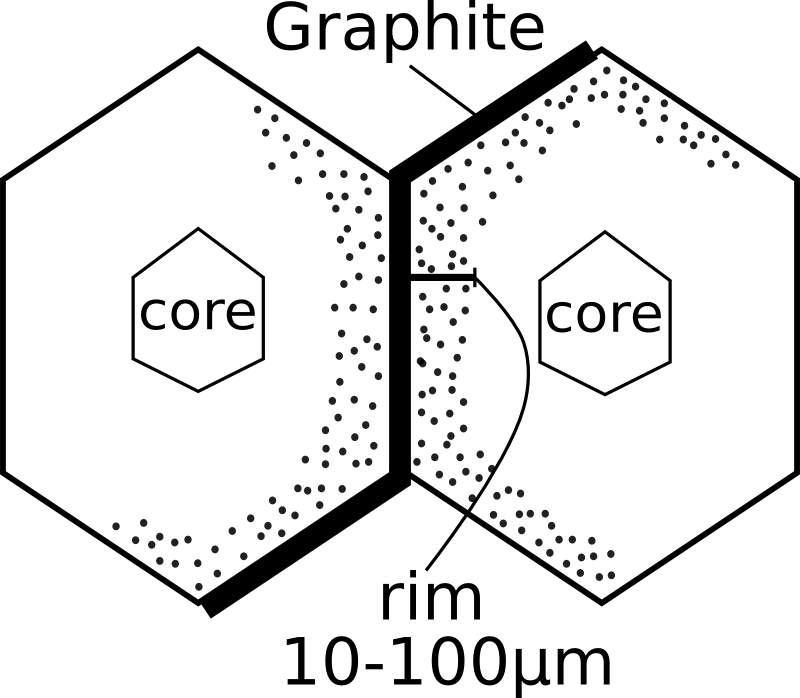1 Introduction
Ureilites are achondrites that contain about 70 vol. % magnesium rich olivine (Fo
76-92) and 30 vol. % pyroxene (orthopyroxene as well as clinopyroxene) as main components (Grady et al., 1985). The intergranular matrix contains 3 wt% carbon in the form of graphite and/or diamond veins. Diamond veins, in particular, are important because they are a sign of some high pressure event in the ureilite's development history. As suggested by Takeda (1987) ureilites formed as asteroidal mantle restites with an oxygen-isotopic diversity (Clayton & Mayeda, 1988) suggesting a heterogenous starting material, contrary to the homogenous igneous body theory proposed by Goodrich et al. (1987) and others.
Ureilite olivine crystals have reduction rims containing exsolved fine Fe-metal blebs. The rims are 10-100µm wide.
The contact between the homogeneous olivine cores and the reduced rims are generally very sharp and show no gradient in terms of FeO-content (Singletary & Grove, 2003). One of many theories concerning the formation of the reduction rims (e.g. Goodrich et al., 1987; Boynton et al., 1976) is that of a secondary reduction process that is probably associated with an impact, the disruption and smelting of the ureilite parent body as illustrated in
Figure 1 (Warren & Kallemeyn, 1992; Warren, 1996). Due to the presence of graphite during this impact and heating event the ureilite olivines were vulnerable to smelting and the FeO reacted with carbon to form Fe-metal and CO gas:
or alternatively in two seperate reactions:
According to these reactions as shown by Walker & Grove (1993), the intergranular graphite was essential for the formation of the ureilite olivine reduction rims (see
Figure 2).
This work presents an attempt to reproduce olivine reduction rims similar to those in ureilite olivines. The goal is to determine the time span needed for the formation of reduction rims of 10-100µm. The starting material are San Carlos olivines. The San Carlos locality is located in Arizona, USA and is characterized by a late Tertiary to Quaternary basalt flow containing ultramafic inclusions (Frey & Prinz, 1978). The mineralogy of this peridotite is dominated by olivine, followed by orthopyroxene, clinopyroxene and spinel. The major element abundances in SC-Olivines are given by Frey & Prinz (1978).
 Reduction rims in San Carlos olivines: an analog to reduction rims in ureilite olivines -- GeoPeP 2013
Reduction rims in San Carlos olivines: an analog to reduction rims in ureilite olivines -- GeoPeP 2013
